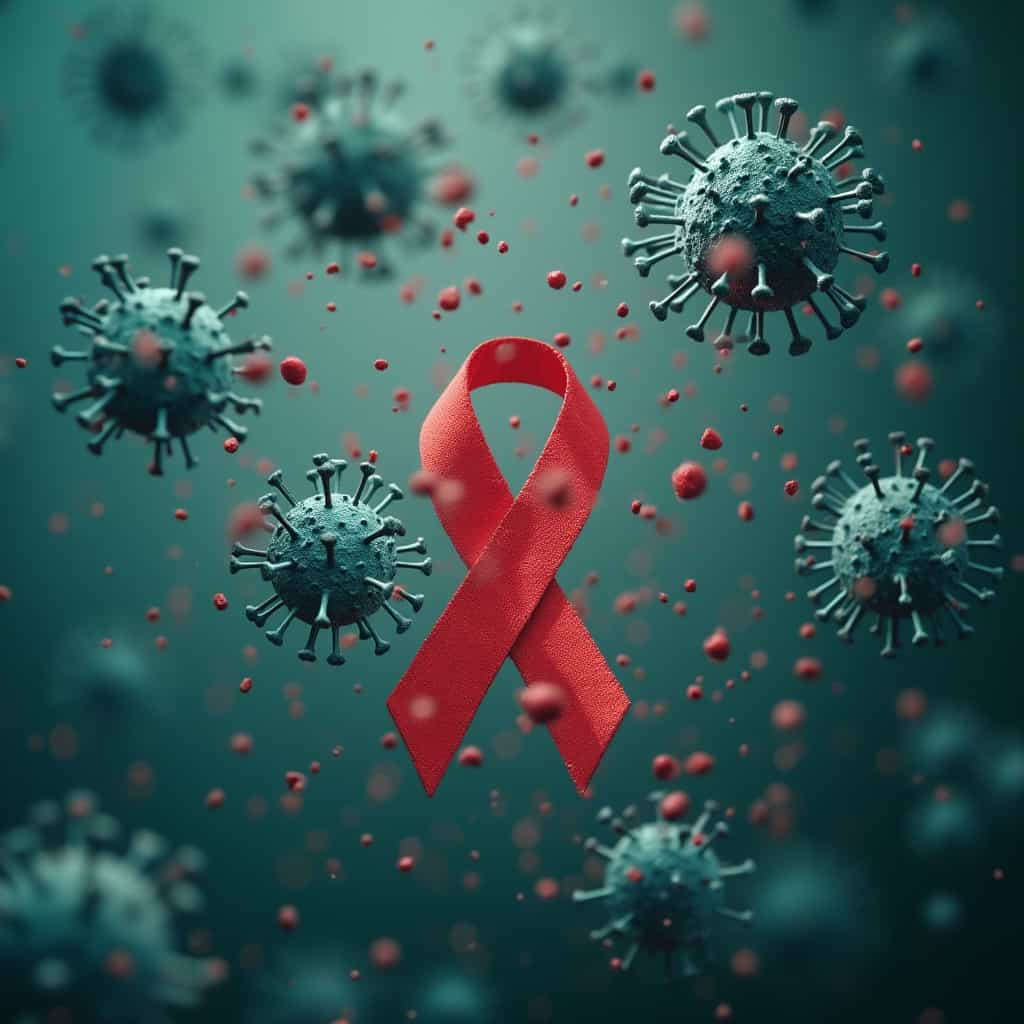Human Immunodeficiency Virus (HIV) remains one of the world’s most persistent health challenges, affecting millions globally. Originally identified in the 1980s, its impact has been profound, leading to the Acquired Immunodeficiency Syndrome (AIDS) which, if untreated, results in significant mortality. The virus targets the immune system, and its progression can lead to severe health complications.
The symptoms of HIV vary, progressing through stages often starting with acute infection. This initial stage, known as primary or acute HIV infection, may present flu-like symptoms such as fever, sore throat, rash, and swollen lymph glands. These can be easily mistaken for other viral infections, leading to delays in diagnosis.
As the virus advances, the asymptomatic stage follows, which can last up to a decade. During this phase, the virus remains active but replicates at low levels, and individuals often remain unaware of their infection. It’s crucial to recognize this silent phase to prevent transmission.
Women face unique challenges regarding HIV. Biologically, women are more susceptible to contracting HIV through heterosexual intercourse compared to men, due to their anatomical differences. Additionally, socio-economic factors and gender inequality can exacerbate vulnerability. Women often face stigmatization in many regions, which can deter them from seeking testing and treatment.
Incidence rates vary worldwide, with Sub-Saharan Africa bearing the largest burden. It accounts for more than two-thirds of the global HIV cases. In contrast, Western and Central Europe and North America have lower prevalence rates, attributed to better healthcare systems and access to education.
Transmission primarily occurs through unprotected sexual contact, sharing of contaminated needles, and from mother to child during childbirth or breastfeeding. Despite common misconceptions, HIV cannot be transmitted through casual contact, a fact that needs constant reiteration to combat stigma.
Treatment for HIV has evolved significantly. Antiretroviral therapy (ART) is the cornerstone of HIV treatment, helping to control the virus and prevent transmission. ART is incredibly effective when adhered to consistently, transforming HIV from a fatal disease into a manageable chronic condition.
For women, especially those pregnant, ART is crucial in preventing mother-to-child transmission. The success of treatments has also been contingent on timely intervention, emphasizing the importance of regular testing.
Recent studies have shaped a hopeful future in HIV research. The development of long-acting injectable antiretrovirals could revolutionize treatment adherence, providing convenience and reducing stigma. Moreover, research into potential vaccines continues, albeit with slow progress.
The emergence of pre-exposure prophylaxis (PrEP) has been a game-changer in prevention, especially among high-risk populations. PrEP is an antiretroviral pill taken by HIV-negative individuals to prevent infection, demonstrating significant effectiveness.
However, challenges remain. In many regions, access to healthcare and affordability of treatment continue to hinder progress. Additionally, social and cultural barriers, particularly in low-income communities, aggravate the proliferation of HIV.
Education remains one of the most potent tools against HIV. Comprehensive sexual education can dispel myths, promote safe practices, and encourage regular testing. Global campaigns and local initiatives have made strides, but continuous effort is necessary.
Itir Bergman, a health policy expert, notes, ‘The global disparity in HIV treatment highlights the need for international cooperation and investment. Addressing social determinants of health is just as critical as scientific advancements.’
Moreover, the COVID-19 pandemic has posed unexpected hurdles, stretching healthcare resources and delaying critical HIV research and treatment services. Prioritizing dual efforts to manage both pandemics is crucial.
Innovative approaches, such as mobile health units and telemedicine, have emerged in response to these challenges, highlighting the potential for technology in bridging healthcare gaps especially in remote regions.
HIV prevention strategies are also evolving. Needle exchange programs and harm reduction strategies have shown success in reducing transmission among individuals who inject drugs, a major transmission route in several regions.
Public figures and activists play a vital role in raising awareness. For instance, Prince Harry has been a vocal advocate for HIV awareness and testing, highlighting the non-discriminatory nature of the virus and urging widespread testing.
Some beliefs persist despite evidence, such as the idea that HIV exclusively affects marginalized groups. This misconception can lead to complacency in testing across broader demographics, underscoring the need for widespread education.
The Global Fund and similar organizations focus on financing HIV treatment and prevention efforts, yet funding remains a persistent challenge. Efforts to sustain and increase these resources are ongoing.
Cultural factors can significantly affect HIV prevalence. In some communities, traditional beliefs may hinder acceptance of modern medical practices, necessitating culturally sensitive approaches in education and treatment programs.
In conclusion, while formidable progress has been made in combating HIV, persistent challenges require unwavering attention. From scientific research to policy and education, a multidimensional approach is necessary to eradicate HIV.
In summation, the fight against HIV is as much about science as it is about society. Bridging healthcare gaps, overcoming stigma, and fostering innovation are crucial in moving towards an HIV-free generation.
You may also like
Elderly Care with Caregivers: Costs and Benefits Across Regions
Elderly care with professional caregivers has become a crucial service in our aging societies. This article delves into the proposals, costs, and benefits of hiring caregivers, as well as the geographical variances in care options and challenges.
Elderly Care in Nursing Homes: Proposals, Costs and Advantages
This article explores the intricacies of elderly care in nursing homes, shedding light on various proposals, costs, and benefits. It delves into regional differences in elderly care practices and explores the social, economic, and emotional impacts on families and caregivers.
External Hearing Aids: Technologies and emerging innovations
Exploring the landscape of external hearing aids, this article delves into current technologies, emerging innovations, and geographical trends in usage. The piece provides insights into the devices available on the market and the futuristic studies reshaping the hearing aid industry.
Internal Hearing Aids and Cutting-Edge Technologies
This article delves into the advancements and variety of internal hearing aids, highlighting emerging technologies and geographical usage trends. It explores current devices, ongoing research, and the global landscape of hearing aid adoption.
